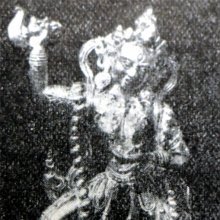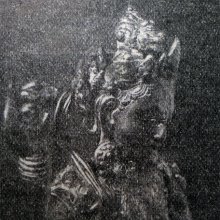Garudasya, Garuḍāsyā, Garuḍāsya, Garuda-asya: 1 definition
Introduction:
Garudasya means something in Buddhism, Pali. If you want to know the exact meaning, history, etymology or English translation of this term then check out the descriptions on this page. Add your comment or reference to a book if you want to contribute to this summary article.
Images (photo gallery)
In Buddhism
Tibetan Buddhism (Vajrayana or tantric Buddhism)
Source: archive.org: The Indian Buddhist IconographyGaruḍāsyā (गरुडास्या) (“Garuḍa-faced”) refers to one of the eight “Animal-faced Goddess”, as commonly depicted in Buddhist Iconography, and mentioned in the 11th-century Niṣpannayogāvalī of Mahāpaṇḍita Abhayākara.—There is a set of four deities described in the Niṣpannayogāvalī; they all have animal faces and have several forms. They are given each a different direction in the maṇḍala. [...] To this number, in the kālacakra-maṇḍala, four more deities [viz., Garuḍāsyā] with birds faces are added for the intermediate corners.

Tibetan Buddhism includes schools such as Nyingma, Kadampa, Kagyu and Gelug. Their primary canon of literature is divided in two broad categories: The Kangyur, which consists of Buddha’s words, and the Tengyur, which includes commentaries from various sources. Esotericism and tantra techniques (vajrayāna) are collected indepently.
See also (Relevant definitions)
Relevant text
Search found 1 books and stories containing Garudasya, Garuḍāsyā, Garuḍāsya, Garuda-asya, Garuḍa-asyā, Garuḍa-asya; (plurals include: Garudasyas, Garuḍāsyās, Garuḍāsyas, asyas, asyās). You can also click to the full overview containing English textual excerpts. Below are direct links for the most relevant articles:
The Indian Buddhist Iconography (by Benoytosh Bhattachacharyya)

